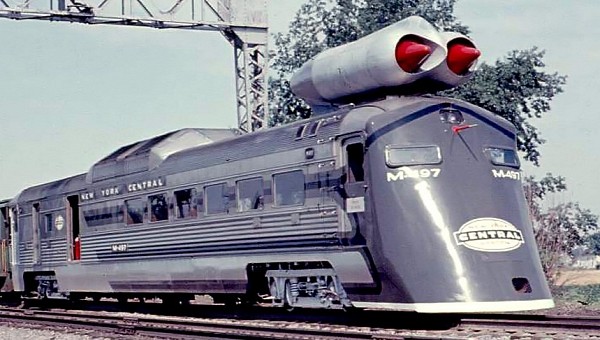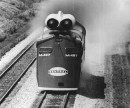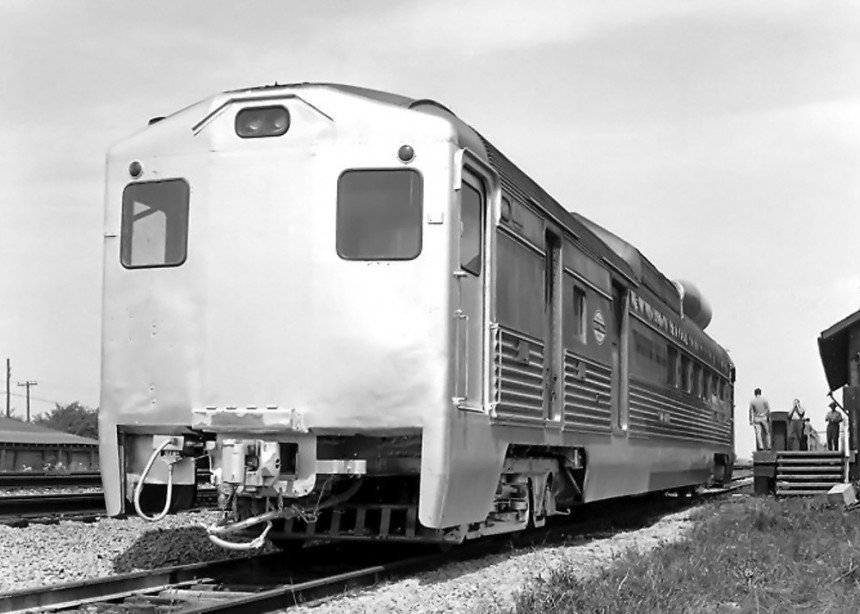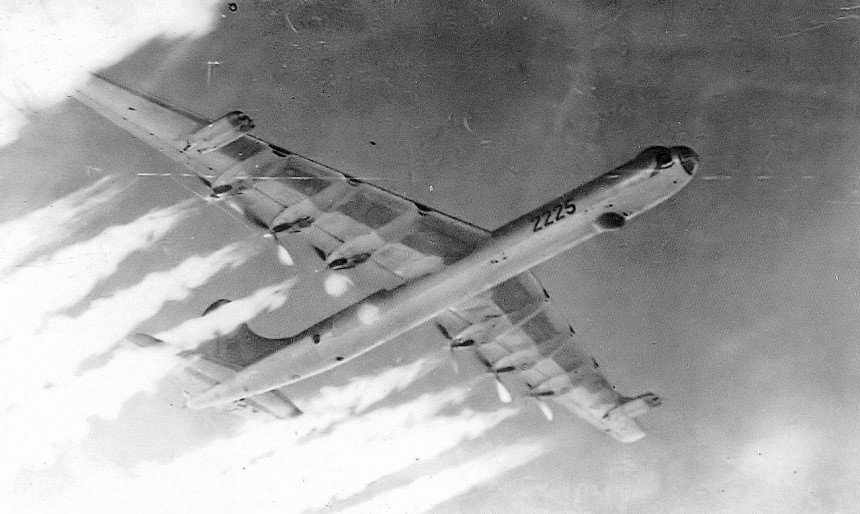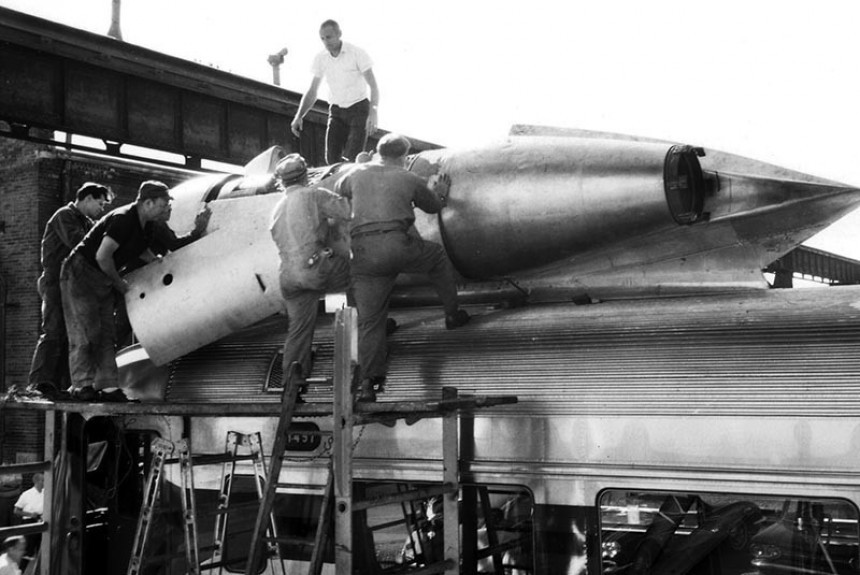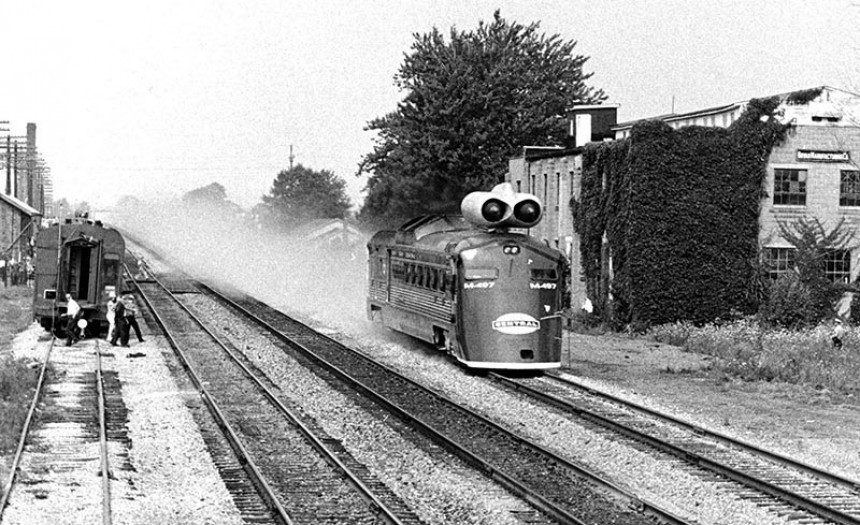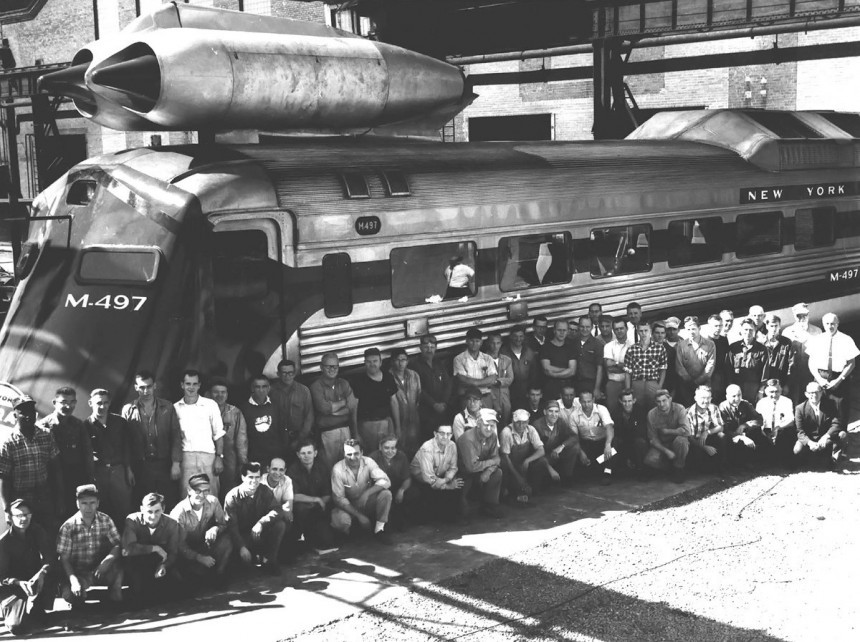We at autoevolution usually deal with cars (mostly) and their derivatives, motorbikes (regularly) and bicycles, airplanes and spacecraft, and seafaring vessels. However, there is one unsung hero of transportation that seems to fade into collective oblivion. Despite its incalculable contribution to the development of modern industrial civilization, this magnificent invention slowly falls lower and lower on the appraisal scale.
We are talking about the train – the marvelous invention that carved the modern world in many ways. It is, perhaps, the only means of land transportation to have transitioned through every milestone stage of the power-generating revolution: the Steam Era, the Oil Boom, and the Electric Frenzy.
In many ways, trains paved the path in which the all-mighty automobile came to rule. Just think of today's hybrid cars and remember that trains were hybrid-powered way before this trend was mainstream engineering.
And, as far as electrification is concerned, we won't open the debate – it's simply not arguable. Trains benefitted from electrification almost an entire century before Elon Musk opened his eyes to this world.
However, with the ever-faster increasing dominance of the personal car (be it luxury or not), the train lost its status as the leading solution for long-distance travel. Sure, the airplane played its part in stabbing the railcar in the buffer, and certainly, there are undeniable advantages of flight over land-bound motility.
But what if I told you there was a time when trains looked up to airplanes and drew inspiration from the flying machines? Not from the altitude at which those glided but from a much more engine-interested aspect: the powerplant.
Back in the 60s, during the pioneering age of space conquering, the jet engine had established itself as the fast boy's go-to mechanical solution for speed-breaking feats. So, it only came naturally that this new "power sweetheart" would stir the imagination of gearheads.
One day in 1965, a railroad engineer named Donald C. Wetzel was enjoying a casual coffee with a colleague, and they started talking about high-speed trains. Sometime during the following year, Wetzel pitched his idea to his company's president, Alfred P. Pearlman. Amazingly, the concept got the green light – on one condition: a 30-day deadline.
Wetzel – a former fighter pilot and all-around MacGyver – didn't give the task much thought, as he already had the solution. Strap a jet engine to a train engine and fire it up - it's not rocket science. His "make it work" attitude and airplane background led to a U.S. Air Force surplus shopping session.
So in he went to Davis-Monthan Air Force Force Base in Tucson, Arizona, and returned with not one but two fully functional General Electric J47-19 engines repurposed from a retired B-86 Convair nuclear bomber. Much to everyone's amazement, the whole affair cost just $5,000.
Wetzel then slammed the twin jets on top of a diesel railcar, and that was it. Well, almost - an aviator at heart, the engineer took his wife's advice and made some modifications. There's a common creed among airmen that "if it looks good, it flies good."
Thus, to make the test train look better, a slant-nose front panel - devised by Wetzel's spouse - was fitted. Also, the engines were installed in the front - also a Mrs. Wetzel suggestion. The train - christened "Black Beetle" - was ready for its test run.
In July 1966, the car fired up the two jets and roared down the right-of-way between Butler, Indiana, and Air Line Junction, Ohio. The section was a 68-mile-long (110 km) strip of tangent double-track. The railway officials calculated that the jet locomotive would reach 184 mph (296 kph) during the trials.
As it turns out, Don Wetzel put his heavy hand on the throttle, and his railcar tore down the tracks at a peak speed of 196 mph (315 kph). However, since the speed traps were set for 184 mph, the daredevil had to ease out when passing the speed-measuring points.
Unbeknownst to the American endeavors, the French had established a speed record for jet-propelled trains – 202 mph (325 kph) just a few months earlier (albeit not in a regular passenger rail car). Had he known this little detail, Don would have most certainly put the hammer down on his General Electric turbines to steal the crown.
Still, his feat set a still-standing speed record for trains in the U.S. - 183.68 mph (295.6 kph) as measured by the official timers. In the video, you can see Don recall his feat and joke about how he set a speed record while hitting the brakes.
The milestone set on that day endures as both the fastest Light Rail Vehicle in the U.S. and the fastest jet-powered train in the world. Interestingly, the two bomber powerplants were chosen because " they were the cheapest 5,000-hp engines available." To add to this unlikely quality, Wetzel and his team converted the jets to run on conventional locomotive fuel.
That's diesel, which is more viscous than jet fuel. The mechanics had to develop a way to increase nozzle pressure so the diesel would atomize and ignite in the combustion chambers. Easier done than said: a makeshift throttle from a hydraulic flow control valve solved the issue flawlessly.
The two combined engines would yield a thrust of 10,400 lbf (46 kN), more than enough to dart the lightweight railcar at breakneck speeds. At one point, the witnesses had the impression that the train – code M-497 – had become airborne.
Much to everyone's momentarily horror, the dispatcher reported a track-occupied light going off. Typically, that would mean a train was not on the rails, and everyone's hearts skipped a beat. However, the combination of high speed and light mass of the test train led to the light turning off on the command board. Ultimately, the test concluded without incidents, and Don Wetzel powered his way into history.
The train never ran again, and the jet engine would go on to power airplanes, cars, fire-fighting machinery, snow-blowers, and boats, but not trains. After the 1966 record, the railcar M-497 was stripped of its jets and used for parts for nearly two decades. In 1984, the rail company scrapped the historic vehicle and an invaluable piece of railroad legend was lost forever.
In many ways, trains paved the path in which the all-mighty automobile came to rule. Just think of today's hybrid cars and remember that trains were hybrid-powered way before this trend was mainstream engineering.
And, as far as electrification is concerned, we won't open the debate – it's simply not arguable. Trains benefitted from electrification almost an entire century before Elon Musk opened his eyes to this world.
But what if I told you there was a time when trains looked up to airplanes and drew inspiration from the flying machines? Not from the altitude at which those glided but from a much more engine-interested aspect: the powerplant.
Back in the 60s, during the pioneering age of space conquering, the jet engine had established itself as the fast boy's go-to mechanical solution for speed-breaking feats. So, it only came naturally that this new "power sweetheart" would stir the imagination of gearheads.
Wetzel – a former fighter pilot and all-around MacGyver – didn't give the task much thought, as he already had the solution. Strap a jet engine to a train engine and fire it up - it's not rocket science. His "make it work" attitude and airplane background led to a U.S. Air Force surplus shopping session.
So in he went to Davis-Monthan Air Force Force Base in Tucson, Arizona, and returned with not one but two fully functional General Electric J47-19 engines repurposed from a retired B-86 Convair nuclear bomber. Much to everyone's amazement, the whole affair cost just $5,000.
Thus, to make the test train look better, a slant-nose front panel - devised by Wetzel's spouse - was fitted. Also, the engines were installed in the front - also a Mrs. Wetzel suggestion. The train - christened "Black Beetle" - was ready for its test run.
In July 1966, the car fired up the two jets and roared down the right-of-way between Butler, Indiana, and Air Line Junction, Ohio. The section was a 68-mile-long (110 km) strip of tangent double-track. The railway officials calculated that the jet locomotive would reach 184 mph (296 kph) during the trials.
Unbeknownst to the American endeavors, the French had established a speed record for jet-propelled trains – 202 mph (325 kph) just a few months earlier (albeit not in a regular passenger rail car). Had he known this little detail, Don would have most certainly put the hammer down on his General Electric turbines to steal the crown.
Still, his feat set a still-standing speed record for trains in the U.S. - 183.68 mph (295.6 kph) as measured by the official timers. In the video, you can see Don recall his feat and joke about how he set a speed record while hitting the brakes.
That's diesel, which is more viscous than jet fuel. The mechanics had to develop a way to increase nozzle pressure so the diesel would atomize and ignite in the combustion chambers. Easier done than said: a makeshift throttle from a hydraulic flow control valve solved the issue flawlessly.
The two combined engines would yield a thrust of 10,400 lbf (46 kN), more than enough to dart the lightweight railcar at breakneck speeds. At one point, the witnesses had the impression that the train – code M-497 – had become airborne.
The train never ran again, and the jet engine would go on to power airplanes, cars, fire-fighting machinery, snow-blowers, and boats, but not trains. After the 1966 record, the railcar M-497 was stripped of its jets and used for parts for nearly two decades. In 1984, the rail company scrapped the historic vehicle and an invaluable piece of railroad legend was lost forever.
